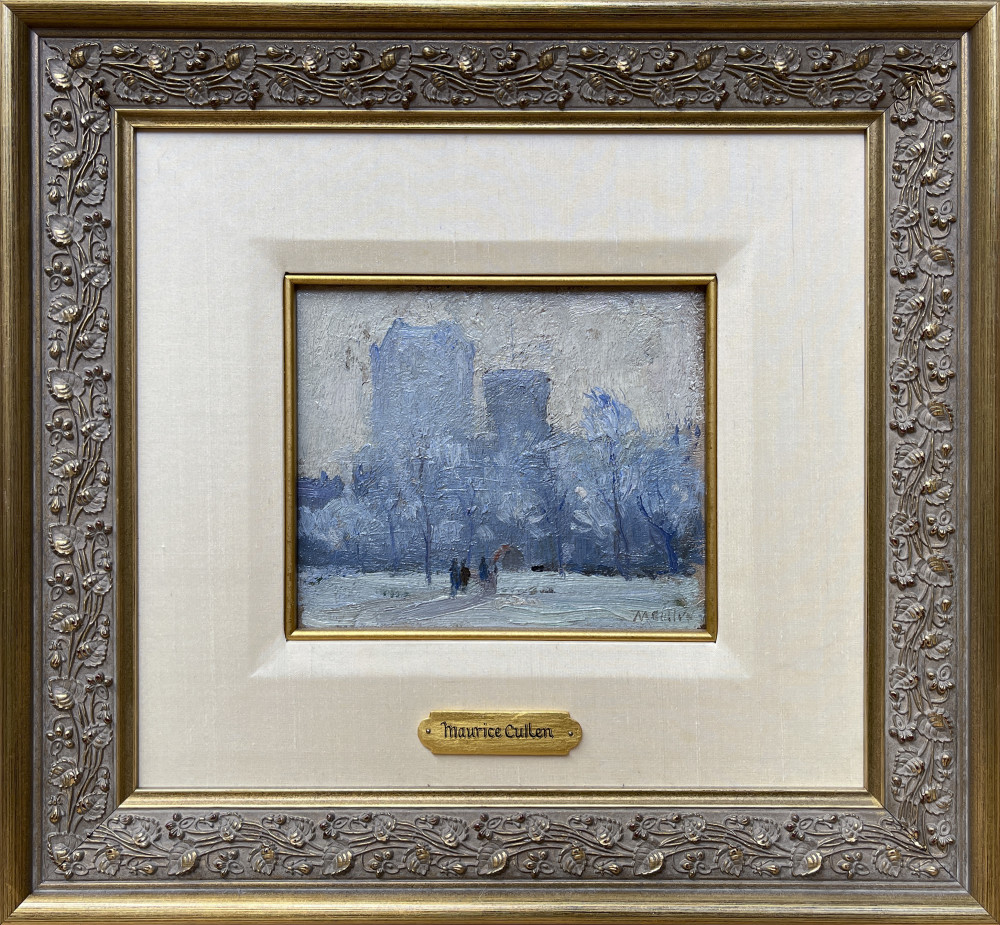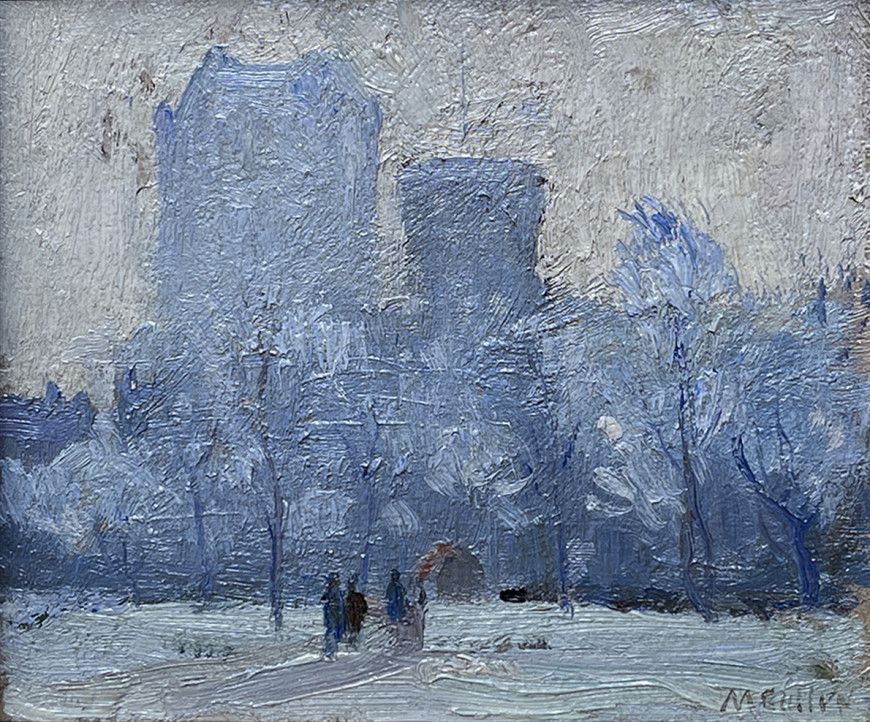-
Artworks
Maurice CullenDominion Square, Montreal, 1914 (circa)1866-1934Oil on panel6 x 7 in
15.2 x 17.8 cm
Alan Klinkhoff Gallery Cullen Inventory No. AKG01580
Walter Klinkhoff Gallery Cullen Inventory No. 1580SoldInscriptions
signed, ‘M CULLEN’ (lower right)Provenance
Irwin’s Limited, Montreal.
The Isaacs Gallery, Toronto.
Collection of the Harris Family, 1996.
Mayberry Fine Art, Winnipeg.
Peter Ohler Fine Arts, Vancouver;
Private collection, Vancouver.
The composition Maurice Cullen offers here is a view looking across Montreal’s Dominion Square. Montrealers are captured on a cold winter’s evening walking through the square and with a characteristic cab stand, horse-drawn cabs and warming hut for the coachmen implied, defining the west end of the Square at Peel Street. The square is and was hardly a 10-minute walk up from his studio on Beaver Hall Square. It is precisely at this juncture that Maurice Cullen achieved some of his finest Montreal urban scenes in his impressionist technique. Whether Cullen was invigorated by his recent marriage to the widowed Barbara Merchant Pilot and the relocation of his new family from Newfoundland to Montreal around this time is a convenient hypothesis to explain the strength of this vintage of his painting in the city.
It is noteworthy that Maurice Cullen was attracted to the composition Dominion Square offers and exhibited a painting, probably a canvas, “Dominion Square, Montreal” in the 1911 Royal Canadian Academy of the Arts and the Art Association of Montreal shows. The architectural development of Canadian Pacific Railway’s Windsor Station from 1889 which serves as Cullen’s backdrop allows us to speculate that our painting dates to the 1914 period, the very year he painted among his most famous paintings including the National Gallery of Canada’s “The Ice Harvest”, or shortly thereafter.
Our 40-year project at Walter Klinkhoff Gallery Cullen Inventory, one which Alan Klinkhoff Gallery continues going forward, allows us to say that, generally speaking, Cullen sketches in oils or pastels, exude a particular vitality or maybe a sensitivity to the lighting of the scene, and a tension or drama experienced on the spot and a challenge to recreate in the studio. Details of the Alan Klinkhoff Gallery Maurice Cullen Inventory Project will be announced shortly.
For Canadian art lovers like ourselves we anxiously await the presentation of "Canada and Impressionism, New Horizons" at Canada’s National Gallery, presently scheduled to be exhibited from January 21 to June 12, 2022. In the exhibition which met with great acclaim in Munich, Lausanne and Montpellier, Maurice Cullen shows very well.
In the catalogue’s Prologue, Adam Gopnik wrote,
“At the other end of his talent, Cullen’s scenes of a Montreal winter night on Craig Street make a former Montreal like me blubber at their truth and pensive touch, for all that Montreal has altered over a century (plates 95 and 98). I used to ski past a house on Mount Royal at night, and the light that Cullen captures - the amber indoors and the violet-steel outside - is the light I saw and still see. It’s the truth."
Speaking to the Canadian Impressionists as a collective, Gopnik concludes;
"Light and life, light as it falls and life as it is. Though truth to local colour is no longer the whole of art, it always will be the heart of painting. Any art that chooses light and life as its object and subject, whatever flag it flies, will shine. The best kid is light on life in a winter house on a snowy city evening, drawing us home, even as we stand outside to look a moment longer. (1)"
Note
1. Adam Gopnik, 'Prologue: Canada and World Impressionism' in Katarina Atanassova et al., "Canada and Impressionism, New Horizons, 1880-1930" (National Gallery of Canada, Ottawa, 2019), 29.1of 10











